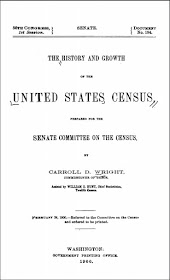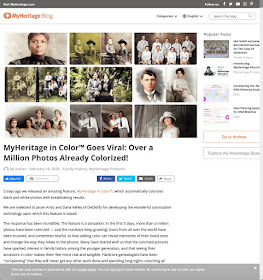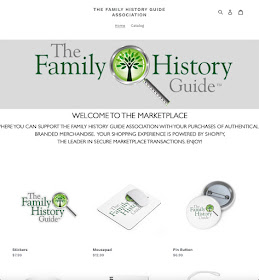In conjunction with Black History Month here in the United States, I thought it might be interesting to list a number of resources for researching African American History and particularly Family History. I hope you find this list useful and interesting. By the way, many of the websites listed have links to even more resources.
African American Heritage Committee (Ky.), Lucille Brooks, and Kentucky Heritage Council. African American Heritage of Simpson County, Kentucky, 2001.
Allen, James E. Black History; Past and Present. New York: Exposition Press, 1971.
Angelou, Maya, Michael Bacon, Bliss Broyard, Don Cheadle, Morgan Freeman, Henry Louis Gates, Peter Gomes, et al.
African American lives 2. Arlington, VA: Public Broadcasting Service (PBS), 2008.
http://www.aspresolver.com/aspresolver.asp?PBSV;2361399.
Bennett, Lerone. Great Moments in Black History: Wade in the Water. Chicago: Johnson Pub. Co., 2000.
Birmingham African-American Genealogy Study Group. “Black Genealogy.” Black Genealogy, 2000.
Black, Edward Davis, and Olive Clarise Sanders Cloud. The Grandsa Black Genealogy. Atlanta, Ga.: E.D. Black, 1984.
Black History. New York, N.Y.: Copublished by the Institute for Research in History and the Haworth Press, 1983.
Black History. Place of publication not identified: publisher not identified, 1990.
Black History Month Activity and Enrichment Handbook: An Easy-to-Use Collection of Ideas, Activities & Games Designed to Help Explore African-American History and Culture. Orange, NJ: Just Us Books, 1990.
Blockson, Charles L. Black Genealogy. Black Classic Pr, 1992.
Blockson, Charles L, and Ron Fry. Black genealogy., 1977.
Canedy, Dana, Darcy Eveleigh, Damien Cave, and Rachel L Swarns. Unseen: Unpublished Black History from the New York Times Photo Archives, 2017.
Carter, Polly, and J. Brian Pinkney. Harriet Tubman and Black History Month. Englewood Cliffs, NJ: Silver Press, 1990.
Cofer, Loris D. Black Genealogy. Glennville, Ga.: Glennville Print. & Office Supply, 1991.
Conyers, James L.
African American Consciousness: Past and Present. New Brunswick, N.J.: Transaction Publishers, 2012.
http://site.ebrary.com/id/10524775.
Dagbovie, Pero Gaglo. The Early Black History Movement, Carter G. Woodson, and Lorenzo Johnston Greene. Urbana, Ill.: University of Illinois Press, 2007.
Dennis, Denise, and Susan Willmarth. Black History for Beginners. Danbury, CT: For Beginners, 2007.
Drimmer, Melvin. Black History: A Reappraisal. Garden City, N.Y.: Anchor Books, 1969.
Drotning, Phillip T, and A guide to Negro history in America. An American Traveler’s Guide to Black History. Garden City, N.Y.: Doubleday, 1970.
Eakle, Arlene H, and Johni Cerny. The Source: A Guidebook of American Genealogy. Salt Lake City, Utah: Ancestry Publishing Company, 1984.
Gates, Henry Louis, and J. A Rogers. 100 Amazing Facts about the Negro, 2017.
Gill, Joel Christian, and Regina N Bradley. More Uncelebrated Narratives from Black History, 2018.
———. Strange Fruit. More Uncelebrated Narratives from Black History Volume II Volume II, 2018.
Greene, Lorenzo J, and Arvarh E Strickland. Working with Carter G. Woodson, the Father of Black History: A Diary, 1928-1930. Baton Rouge: Louisiana State University Press, 1989.
Hait, Michael. African American Genealogy Research. Place of publication not identified: Genealogical Pub. Co., 2011.
Harrison, Vashti, and Kwesi Johnson. Little Legends: Exceptional Men in Black History, 2019.
Hazen, Walter A, and Margo Burian. Black History. Fort Atkinson, WI.: Edupress, 2007.
Helsley, Alexia Jones, South Carolina, and Department of Archives and History. South Carolina’s African American Confederate Pensioners, 1923-1925. Columbia, S.C.: South Carolina Department of Archives and History, 1998.
Henry, Mike. Black History: More than Just a Month, 2013.
Hinton, Elizabeth Kai, and Manning Marable. The New Black History: Revisiting the Second Reconstruction. New York: Palgrave Macmillan, 2011.
Hunter-Gault, Charlayne. Heroes of Black History: Biographies of Four Great Americans, 2017.
Jackson, Dave, and Neta Jackson. Heroes in Black History: True Stories from the Lives of Christian Heroes. Minneapolis, Minn.: Bethany House, 2008.
Jackson, Tricia Williams. Women in Black History: Stories of Courage, Faith, and Resilience, 2016.
Kallen, Stuart A. Black History. Place of publication not identified: Abdo Group, 2001.
Lester, Julius. Long Journey Home: Stories from Black History. New York: Puffin Books, 1998.
Lotz, Rainer E, Ian Pegg, and Jagdish S Gundara. Under the Imperial Carpet: Essays in Black History, 1780-1950, 1986.
Lusane, Clarence. The Black History of the White House. San Francisco, Calif.: City Lights Books, 2011.
Lyndon, Dan. Black History. London: Franklin Watts, 2010.
Madison, Wisconsin African American Genealogy Group. Nine African American Women: Their Memories and Reflections, 2016.
Marable, Manning. Living Black History: How Reimagining the African-American Past Can Remake America’s Racial Future. New York: Basic Civitas, 2011.
McKissack, Pat, and Fredrick McKissack. Carter G. Woodson: The Father of Black History. Berkeley Heights, NJ: Enslow Publishers, 2002.
Mohamud, Abdul, and Robin Whitburn. Doing Justice to History: Transforming Black History in Secondary Schools, 2016.
National Information Center for Educational Media. Index to Black History & Studies (Multimedia). Los Angeles: National Information Center for Educational Media, University of Southern California, 1973.
Price, H. H, and Gerald E Talbot. Maine’s Visible Black History: The First Chronicle of Its People. Gardiner, Me.: Tilbury House, 2006.
Rainville, Lynn. Hidden History: African American Cemeteries in Central Virginia, 2014.
Rose, James M, and Alice Eichholz. Black Genesis: A Resource Book for African-American Genealogy. Baltimore, MD: Genealogical Pub. Co., 2005.
Ross, Leon T, and Kenneth A Mimms. African American Almanac: Day-by-Day Black History. Jefferson, NC: McFarland, 2006.
Schell, Karen D, Cobblestone, and Faces. Black History. Farmingdale, N.Y.: Cobblestone Pub., 1992.
Schubert, Barbara. Black History. San Jose, Calif.: Reflections and Images, 1977.
Sewell George A. Mississippi Black History Makers. Place of publication not identified: Univ Press Of, 1984.
———. Mississippi Black History Makers. Place of publication not identified: Univ Press Of, 1984.
Shetterly, Margot Lee. Hidden Figures: The American Dream and the Untold Story of the Black Women Mathematicians Who Helped Win the Space Race, 2016.
Sinnette, Elinor Des Verney, W. Paul Coates, Thomas C Battle, and Black Bibliophiles and Collectors Symposium, eds. Black Bibliophiles and Collectors: Preservers of Black History. Washington, D.C.: Howard University Press, 1990.
Smith, Charles R, Shane Evans, Dion Graham, William Jackson, and LLC Findaway World. 28 Days: Moments in Black History That Changed the World, 2019.
Stuart, Karlton. Black History & Achievement in America: An Overview of the Black Struggle, Its Heroes and Heroines. Place of publication not identified: Karlt Books, 1982.
Thackery, David T. Finding Your African American Ancestors: A Beginner’s Guide, 2000.
The “Old Northwest” genealogical quarterly. Black Genealogy. Columbus, OH: The Author, 1909.
Twitty, Michael. The Cooking Gene: A Journey through African American Culinary History in the Old South, 2018.
United States, Health Care Financing Administration, and Equal Opportunity Office. Black History Month. Washington, D.C.? Health Care Financing Administration, Equal Opportunity Office, 1989.
Williams, John A, and Charles F Harris. Amistad: [Writings on Black History and Culture]. 1. 1. New York, 1970.
Wright, W. D. Black History and Black Identity: A Call for a New Historiography. Westport, Conn.: Praeger, 2002.
Wright, William D. Critical Reflections on Black History. Westport, CT [etc.: Praeger, 2002.
There is a whole lot more information than I could possibly list but let me end up with these links to the Freedman Records.






























